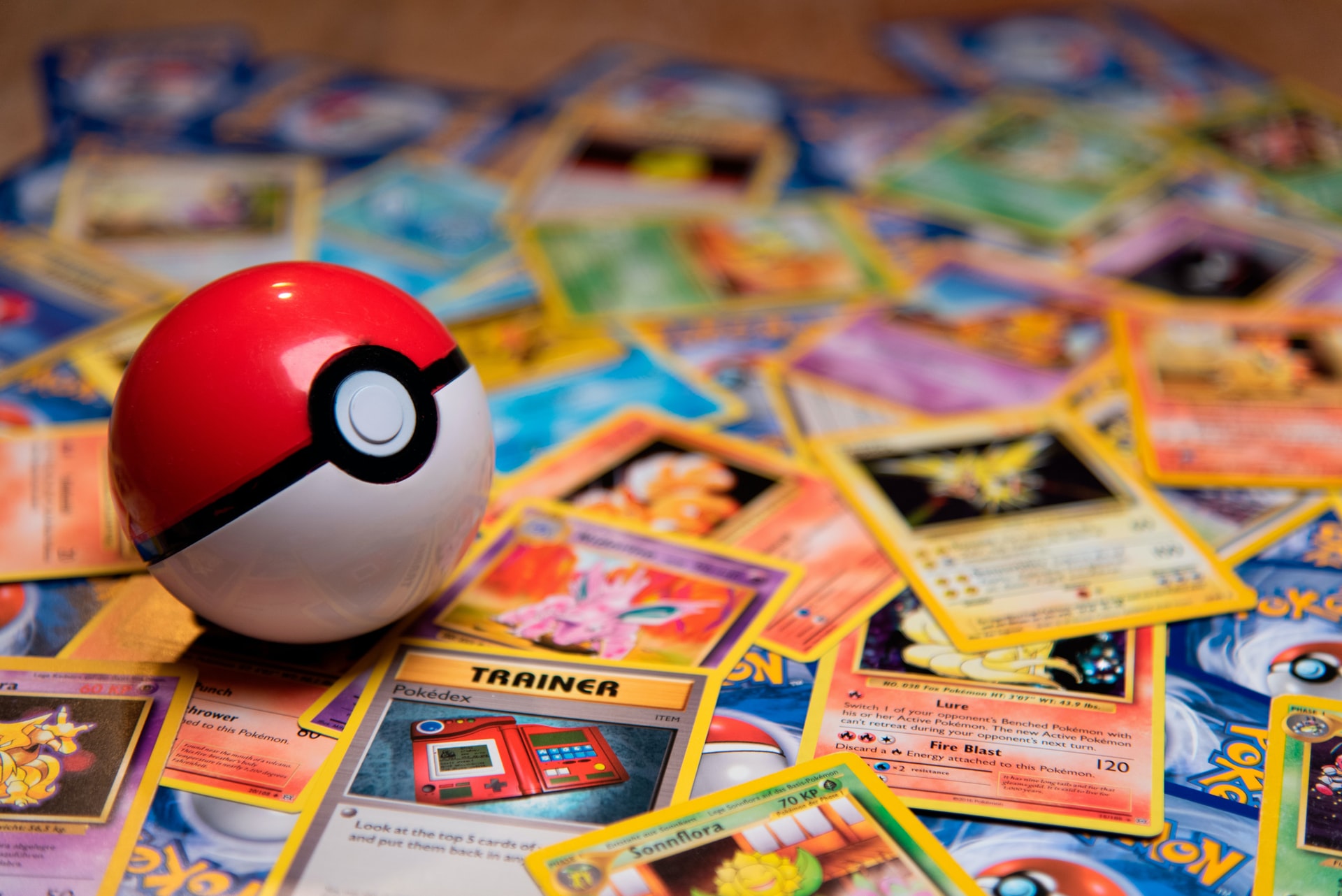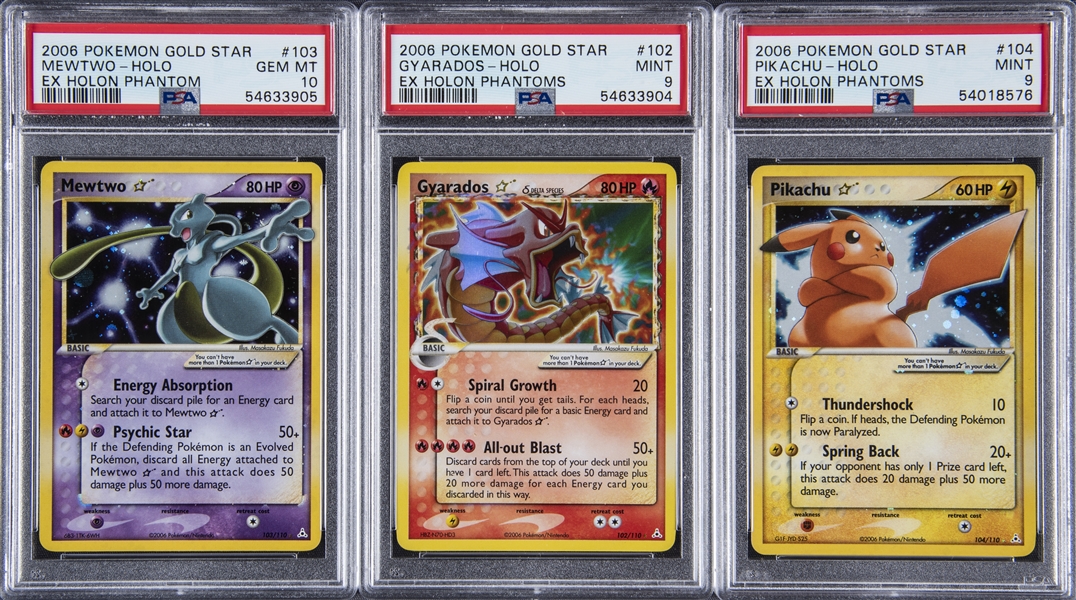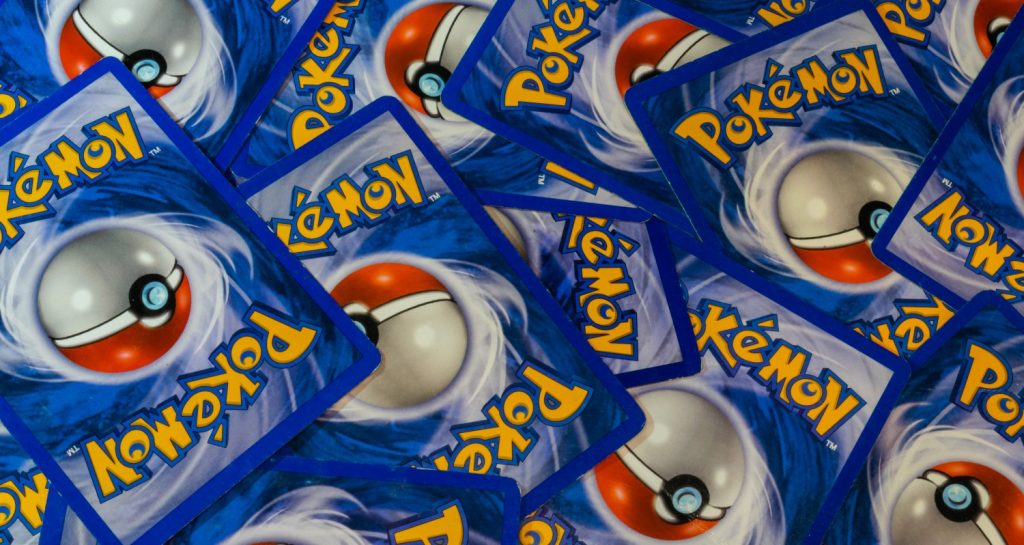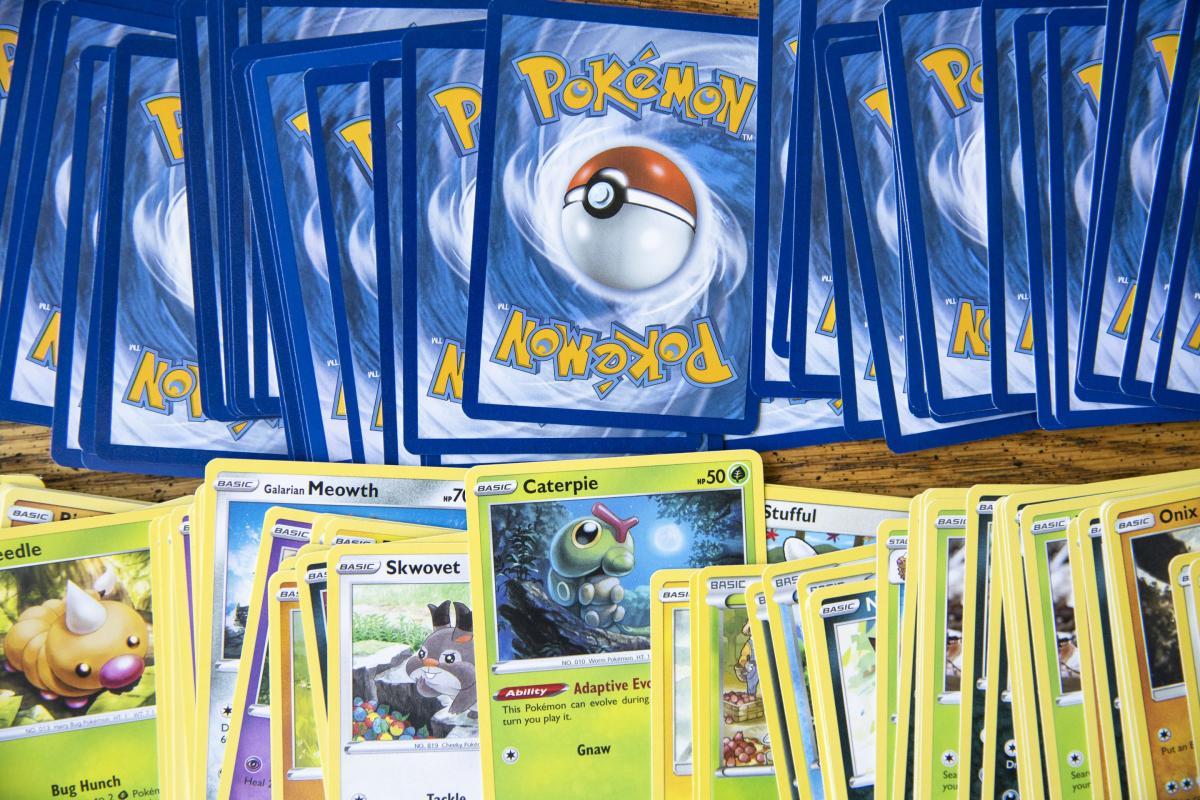
In the enchanting world of Pokémon, where memories of childhood adventures and captivating battles reside, there lies a realm that extends beyond mere nostalgia - the lucrative market to sell Pokémon cards. What once began as a cherished pastime has now transformed into a dynamic industry, attracting collectors, investors, and enthusiasts eager to explore the value hidden within these colorful pieces of cardboard. In this guide, we embark on a journey through the intricacies of selling Pokémon cards, unraveling the secrets to navigating this exciting marketplace.
What Factors Determine The Worth Of A Pokémon Card?
The worth of a Pokémon card is influenced by several key factors that collectors and enthusiasts consider when assessing their value. Understanding these factors is essential for anyone looking to buy or sell Pokémon cards. Here are the key elements that determine the worth of a Pokémon card:
- Rarity -The rarity of a Pokémon card is a fundamental factor in determining its value. Cards that are more challenging to obtain are generally considered more valuable. This includes rare holographic cards, legendary Pokémon cards, and promotional cards that were distributed in limited quantities.
- Edition and Set -Pokémon cards are released in different editions and sets, and the specific edition can significantly impact their value. First-edition cards, indicating they are from the initial print run of a set, are often more valuable. Additionally, certain sets may be more sought after by collectors, contributing to the overall worth of the cards within those sets.
- Card Condition -The condition of a Pokémon card plays a crucial role in determining its value. Cards in mint or near-mint condition, with minimal wear, scratches, or bends, are generally more valuable. Professional grading services, such as PSA (Professional Sports Authenticator) or Beckett Grading Services, provide a standardized way of assessing and communicating the condition of a card.
- Holographic or Foil Features -Holographic or foil elements on a Pokémon card often enhance its appeal and value. Many collectors are drawn to the shimmering holographic patterns, and cards with these features are commonly more valuable than their non-holographic counterparts.
- Popularity of the Pokémon -The popularity of the featured Pokémon can influence a card's value. Cards featuring iconic or fan-favorite Pokémon are often in higher demand, contributing to their overall wortsought-afterh. Legendary and rare Pokémon tend to be more sought-after by collectors.
- Market Demand:The current demand for a specific Pokémon card in the market can greatly affect its value. Trends in the collecting community, events, or media releases related to Pokémon can lead to fluctuations in demand and, consequently, prices.
- Grading -Professionally graded cards tend to have a higher value. Grading services assess the condition of a card and assign a numerical grade, providing collectors with a standardized measure of its quality. Graded cards offer assurance of authenticity and condition.
- Promotional and Event Cards -Cards distributed as promotional items or exclusive event giveaways can be highly valuable due to their limited availability. These cards are often harder to obtain, contributing to their increased worth among collectors.
How To Sell Pokemon Cards For Cash?
Selling Pokémon cards for cash can be a straightforward process if you follow the right steps. Whether you're a seasoned collector looking to trim your collection or someone hoping to turn their Pokémon cards into quick cash, here's a guide on how tosell Pokémon cards for cash:
- Assess Your Collection -Start by assessing your Pokémon card collection. Identify rare or valuable cards, paying attention to factors such as rarity, edition, condition, and holographic features. Use online resources, price guides, and grading services to determine the market value of your cards.
- Organize and Catalog -Systematically organize your Pokémon cards. Create a detailed list or catalog highlighting key information about each card, including the card name, set, edition, condition, and any unique features. This step will make it easier for potential buyers to evaluate your collection.
- Consider Professional Grading -If you have high-value cards or cards in excellent condition, consider getting them professionally graded by services such as PSA or Beckett. Graded cards often command higher prices in the market due to the assurance of authenticity and condition.
- Research Market Prices -Research current market prices for Pokémon cards, especially those similar to the ones you plan to sell. Check online platforms, auction sites, and trading card marketplaces to gauge the demand and pricing trends for your specific cards.
- Choose a Selling Platform -Select a platform to sell your Pokémon cards. Popular online platforms include eBay, TCGPlayer, and various trading card marketplaces. Each platform has its own user base, fees, and policies, so choose the one that aligns with your preferences and goals.
- Set Fair Prices -Set fair and competitive prices for your Pokémon cards. Consider the condition, rarity, and market demand when determining the value of each card. Be transparent about the condition of your cards in your listings to build trust with potential buyers.
- Create Listings -Create detailed and appealing listings for your Pokémon cards. Include high-quality images, accurate descriptions, and relevant details about each card. Highlight any unique features or selling points to attract potential buyers.
- Promote Your Listings -Share your listings on social media, forums, or community groups dedicated to Pokémon card trading and selling. This can help increase the visibility of your cards and attract potential buyers beyond the platform where you've listed them.
- Negotiate and Communicate -Be open to negotiations with potential buyers. Promptly respond to inquiries, provide additional information as needed, and maintain clear communication throughout the selling process. Positive interactions can lead to satisfied customers and potential repeat business.
- Secure Packaging and Shipping -Once a sale is confirmed, ensure secure packaging to protect the cards during shipping. Use protective sleeves, top loaders, and sturdy packaging materials. Provide tracking information to the buyer and adhere to the shipping policies of the selling platform.
- Receive Payment -Receive payment from the buyer through the chosen selling platform. Different platforms have various payment methods, so make sure to follow their guidelines for a smooth transaction.
By following these steps, you can successfully sell your Pokémon cards for cash while ensuring a positive experience for both you and the buyers involved.
What Influences Pokemon Card Prices?
Pokémon cards have evolved beyond mere game pieces; they have become a cherished and sought-after collectible for enthusiasts spanning various age groups. From the original base set to the latest expansion packs, these cards carry both sentimental and monetary value, making them a dynamic aspect of the trading card community. In this exploration, we will delve into the intricate factors that contribute to the worth of Pokémon cards.
One of the paramount elements influencing a Pokémon card's value is its rarity or scarcity. The limited availability of certain cards, such as first edition cards from earlier sets or exclusive promotional cards distributed at specific events, intensifies their allure among collectors. Scarcity transforms these cards into coveted treasures, driving up their market value.
The condition of a Pokémon card stands as a pivotal determinant of its worth. Pristine or near-mint cards, free from wear and damage, command higher values. To objectively assess a card's condition, professional grading services have emerged, employing rigorous criteria including centering, corners, edges, surface quality, and overall presentation. Cards achieving higher grades are often associated with superior condition and, subsequently, higher market prices.
The popularity of certain Pokémon cards is a potent force shaping their market value. Cards featuring beloved characters like Pikachu or iconic Pokémon such as Charizard hold enduring appeal, making them highly sought after by collectors. Unique artwork and designs contribute to the desirability of specific cards, and ongoing trends within the Pokémon community can dynamically influence their market demand.
The age of a Pokémon card can imbue it with a unique historical appeal. Vintage cards from the early years of the Pokémon franchise hold a nostalgic charm, especially for collectors who fondly remember the original trading card game. Historical significance also emerges from cards associated with the game's competitive scene, where cards once deemed overpowered or banned may become sought-after relics for collectors seeking a piece of Pokémon history.
Which Pokémon Cards Are Worth Of Most Money?
The value of Pokémon cards can vary widely based on several factors, including rarity, condition, edition, and market demand. Here are some categories of Pokémon cards that have historically been associated with high values. Keep in mind that the market can change, and new releases or events may impact card values. Always check the latest market trends for the most accurate information.
- First Edition Cards -First edition Pokémon cards, denoted by a "1st Edition" stamp on the card, are often more valuable due to their limited initial print run. Some first-edition cards, especially those from the Base Set, can command high prices among collectors.
- Holographic Cards -Holographic or foil-etched cards are highly sought after by collectors. These cards feature a special shine or pattern, making them visually appealing. Holographic rare cards from various sets, especially if they feature popular Pokémon, tend to have higher values.
- Shadowless Cards -Shadowless cards are another sought-after category. These cards lack the shadow border found on the right side of the illustrations in the first print run of the Base Set. Shadowless versions of some cards can be more valuable to collectors.
- Rare Promotional Cards -Pokémon cards distributed as promotional items at events, tournaments, or through special promotions are often considered rare and valuable. The limited availability of these cards contributes to their higher prices.
- Legendary Pokémon Cards -Cards featuring legendary or mythical Pokémon, especially if they are holographic or part of a special set, can be highly valued. These cards often have a strong appeal to collectors who are fans of the specific Pokémon.
- Graded Cards -Professionally graded cards, particularly those graded by reputable services like PSA (Professional Sports Authenticator) or Beckett, can command higher prices. Graded cards assure authenticity and a standardized assessment of their condition.
- Error Cards -Pokémon cards with printing errors or misprints can attract attention from collectors. Some error cards have become rare due to corrections made in subsequent print runs, adding to their value.
- Gold Star Cards -Gold Star cards, introduced in the EX series, are rare and valuable. These cards feature a gold star symbol and are associated with powerful and legendary Pokémon. The scarcity of Gold Star cards contributes to their high prices.
- Ancient Mew Card -The Ancient Mew card, released as a promotional card for the Pokémon: The Movie 2000, is often considered a collector's item and can have a higher value due to its unique design and limited distribution.
15 Best Places To Sell Pokemon Cards For Cash
There are several reputable places where you can sell Pokémon cards for cash. Keep in mind that the popularity of platforms can change, and it's always a good idea to check the current market conditions. Here are 15 places you can consider:
- eBay -eBay is a widely used online marketplace where you can auction or list your Pokémon cards for sale.
- TCGPlayer -TCGPlayer is a dedicated platform for trading card games, including Pokémon. Sellers can list cards for sale, and buyers can browse and purchase them.
- Cardmarket -Cardmarket is a European platform for buying and selling trading cards. It's popular for Pokémon cards and has a large user base.
- Craigslist - Local classified adsplatforms like Craigslist can be used to sell Pokémon cards to buyers in your area.
- Facebook Marketplace-Facebook Marketplace allows you to sell locally, and it's a convenient platform for reaching potential buyers in your community.
- Instagram -Create an Instagram account dedicated to selling Pokémon cards. Use hashtags to reach a broader audience interested in collecting.
- Reddit (r/pkmntcgtrades) -The Pokémon Trading Card Game subreddit has a dedicated trading section where you can buy, sell, or trade Pokémon cards.
- Local Card Shops -Visit local trading card shops or hobby stores that buy and sell Pokémon cards. Some shops may offer cash or store credit.
- Pawn Shops -Some pawn shops may be interested in purchasing valuable Pokémon cards, especially if they have a market for collectibles.
- Collector's Shows and Events -Attend collector's shows, conventions, or Pokémon events where you can connect with collectors and potential buyers.
- GameStop -GameStop, a popular video game retailer, may buy and sell Pokémon cards in some locations. Check with your local store for their policies.
- Troll and Toad - Troll and Toad is an online marketplace specializing in collectible cards, including Pokémon. You can sell cards directly to them.
- CoolStuffInc -CoolStuffInc is a platform that buys and sells a variety of collectibles, including Pokémon cards.
- Dave & Adam's Card World -This platform buys and sells trading cards, including Pokémon. You can sell your cards to them for cash.
- Local Collectibles Groups -Join local collectibles or trading card groups on social media platforms where you can connect with potential buyers.
Before selling Pokémon cards, it's advisable to research the current market value of your cards, consider their condition, and choose a platform that aligns with your preferences. Additionally, review the selling policies and fees associated with each platform. Always prioritize safe and secure transactions to ensure a positive selling experience.
What Are The Rarity Symbols On Pokémon Cards?
Pokémon cards feature different symbols to indicate their rarity, helping collectors identify the relative scarcity of a particular card. As of my last knowledge update in January 2022, the common symbols include:
- Circle - Common cards typically have a circle symbol.
- Diamond - Uncommon cards are often marked with a diamond symbol.
- Star - Rare cards typically have a star symbol.
- Star Holofoil (Shiny Star) - Rare Holofoil cards, which feature a holographic pattern, have a star symbol as well. This indicates both rarity and the holographic feature.
- Star Holofoil with a Star in the Middle (Shiny Star V) - In certain sets like Shiny Star V, a star symbol with a smaller star in the middle is used to denote ultra-rare cards. These are often highly sought after by collectors.
- Golden Star (Prism Star) - Prism Star cards, introduced in certain sets, have a golden star symbol. These cards are unique, and players can only have one Prism Star card with the same name in their deck.
- Letter "A" (Ace Spec) - In older sets like the Black & White series, Ace Spec cards have an "A" symbol. These are powerful and unique cards, and players can only include one Ace Spec card in their deck.
It's essential to note that these symbols can vary slightly in design or color depending on the Pokémon TCG set. Additionally, the symbols mentioned here apply to the main series of Pokémon cards, and there might be variations or new symbols introduced in later sets.
Which Are The Rarest Pokémon Cards?
The rarity and value of Pokémon cards can change based on market trends, new releases, and collector demand. However, certain cards have historically been considered among the rarest and most valuable in the Pokémon TCG world. Here are a few examples:
- Pikachu Illustrator - Often regarded as one of the rarest Pokémon cards, the Pikachu Illustrator was a promotional card awarded to winners of an illustration contest in Japan. Its limited distribution and unique design contribute to its rarity.
- Holographic Shadowless First Edition Charizard - The first edition holographic Charizard card from the Base Set is iconic and highly sought after. Its rarity is enhanced by being both a first edition and shadowless card.
- First Edition Shadowless Blastoise and Venusaur - Similar to Charizard, the first edition holographic cards of Blastoise and Venusaur from the Base Set are considered rare and valuable.
- Shiny Charizard GX (Hidden Fates) - Shiny Pokémon cards, especially those of popular Pokémon like Charizard, are highly coveted. The Shiny Charizard GX card from the Hidden Fates set is one such example.
- Pikachu Trophy Card - Pikachu Trophy cards were awarded to winners and finalists in various Pokémon TCG tournaments. These cards are extremely rare due to their limited distribution.
- Ancient Mew - The Ancient Mew card was released as a promotional card for the Pokémon: The Movie 2000. Its distinctive design and limited availability make it a collector's item.
- No. 1 Trainer - The No. 1 Trainer card was awarded to winners of the Secret Super Battle tournaments held in Japan in 1999. Its scarcity and historical significance contribute to its rarity.
- Pre-release Raichu - Pre-release cards, distributed before the official release of a set, are generally rare. The pre-release Raichu from the Base Set is one such example.
- Pikachu Gold Star (EX Holon Phantoms) - Gold Star cards, known for their golden star symbol, are rare and sought after. The Pikachu Gold Star card from the EX Holon Phantoms set is particularly valuable.
- Shiny Star V Cards (Especially Charizard) - Shiny Star V is a Japanese set that introduced highly sought-after Shiny Pokémon cards, with the Shiny Charizard VMAX being one of the most coveted.
Tips For Seller To Sell Pokemon Cards
Selling Pokémon cards can be a rewarding endeavor, but success often depends on effective strategies and careful consideration of various factors. Whether you're a seasoned collector looking to downsize your collection or someone looking to turn a profit, here are some tips for sellers to sell Pokémon cards:
- Research Card Values - Before selling any Pokémon cards, research and understand their current market values. Factors like rarity, condition, and demand can significantly influence the prices.
- Sort and Grade Your Cards - Organize your Pokémon cards and consider getting valuable ones professionally graded. Graded cards often fetch higher prices due to the assurance of authenticity and condition.
- Identify Rare and Valuable Cards - Highlight and emphasize rare and valuable cards in your collection. These may include first editions, holographic cards, or those featuring popular Pokémon.
- Take High-Quality Photos - When listing your Pokémon cards online, provide clear and high-quality photos. Showcase the front and back of each card, highlighting any unique features or imperfections.
- Choose the Right Selling Platform - Select a platform that aligns with your selling goals. eBay, TCGPlayer, and local marketplaces are popular options. Each platform has its audience, fees, and policies, so choose accordingly.
- Set Competitive Prices - Price your Pokémon cards competitively by considering their condition, rarity, and market demand. Research similar listings to get a sense of the current market prices.
- Provide Accurate Descriptions - Write accurate and detailed descriptions for your Pokémon cards. Mention the card's condition, any imperfections, and noteworthy features. Transparency builds trust with buyers.
- Offer Bundles or Lots - Consider grouping less valuable cards into bundles or lots. This can be an attractive option for buyers looking to expand their collection at a lower cost.
- Engage with the Pokémon Community - Participate in online forums, social media groups, or local Pokémon events to engage with the community. Networking can lead to potential buyers and valuable insights.
- Promote Your Listings - Share your Pokémon card listings on social media platforms, especially those dedicated to trading cards or collectibles. This increases visibility and attracts potential buyers.
- Be Responsive and Professional - Respond promptly to inquiries from potential buyers. Maintain a professional and courteous demeanor in all interactions. Positive customer servicecan lead to repeat business.
- Consider Local Sales - Explore local selling options, such as community groups, flea markets, or trading card events. Local sales can save on shipping costs and attract buyers in your area.
- Secure Packaging - Ensure your Pokémon cards are securely packaged to prevent damage during shipping. Use protective sleeves, top loaders, and sturdy packaging materials.
- Understand Shipping Policies - Familiarize yourself with the shipping policies of the platform you're using. Provide accurate shipping estimates and communicate tracking information to buyers.
- Be Flexible with Pricing and Negotiations - Be open to negotiations, especially if you're looking to sell a large collection. Flexibility in pricing can attract more buyers and facilitate quicker sales.
Sell Pokémon Cards - FAQs
How Do I Get My Pokémon Cards Graded?
To get your Pokémon cards graded, you can use professional grading services such as PSA (Professional Sports Authenticator) or Beckett. These services evaluate the condition of your cards and assign them a numerical grade, enhancing their credibility and potential value.
What Is The Most Expensive Pokémon Card In The World?
The most expensive Pokémon card varies, but the Pikachu Illustrator card holds the record for being one of the priciest. Its rarity, limited distribution, and unique design have made it highly sought after by collectors, with some selling for substantial amounts at auctions.
Do Pokémon Cards From The 90s Have Any Value?
Yes, many Pokémon cards from the 90s hold significant value, especially those from the original Base Set. First edition cards, holographic cards, and certain rare cards from this era are often sought after by collectors for their nostalgic and historical significance.
Can I Sell Damaged Pokémon Cards?
Yes, you can sell damaged Pokémon cards, but their value will likely be lower compared to cards in better condition. Be transparent about the damage when listing the cards, and consider selling them as part of a bundle or lot to attract buyers looking for affordable options.
How Do I Find Out Which Pokémon Cards Are Rare?
To identify rare Pokémon cards, look for symbols on the cards indicating their rarity (circle for common, diamond for uncommon, star for rare, etc.). Research specific sets and editions, focusing on first edition cards, holographic cards, and those associated with limited releases or promotions for higher rarity. Online price guides and collector communities can also provide valuable information.
Final Words
As we bring our exploration of selling Pokémon cards to a close, it becomes evident that the allure of these collectibles extends far beyond the realm of gameplay and nostalgia. The cards that once fueled childhood dreams now have the potential to fuel financial aspirations. Whether you're a seasoned collector looking to part with duplicates or a newcomer hoping to turn your love for Pokémon into a profitable venture, the world of selling Pokémon cards offers a plethora of opportunities.
By understanding the market, showcasing the value of your collection, and engaging with reputable platforms and buyers, you embark on a journey where nostalgia meets entrepreneurship, and the magic of Pokémon transcends generations. May your cards find new homes and bring joy to collectors, as you navigate this ever-evolving landscape of Pokémon card sales.


